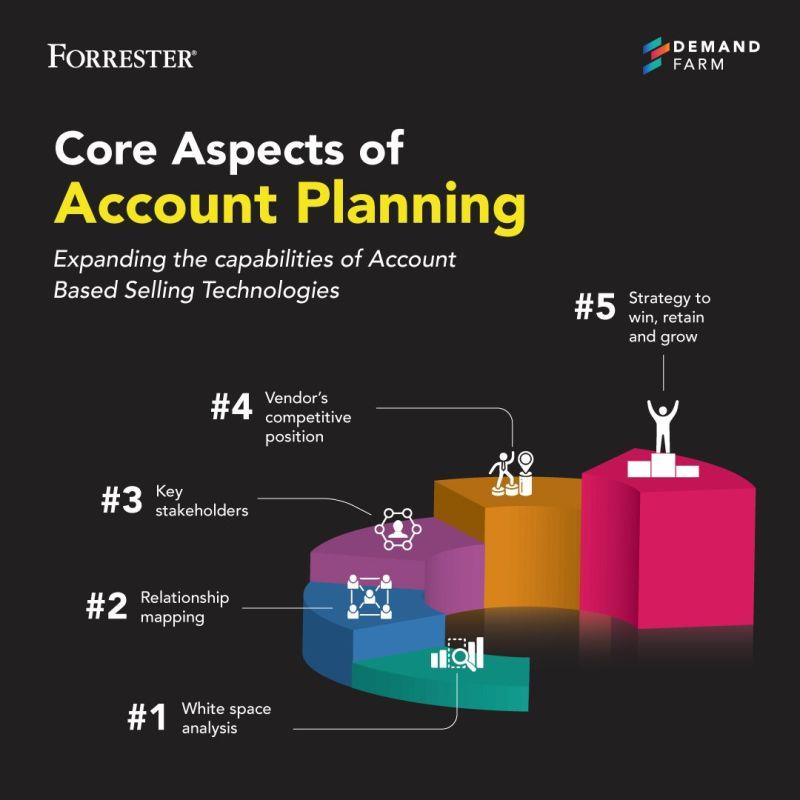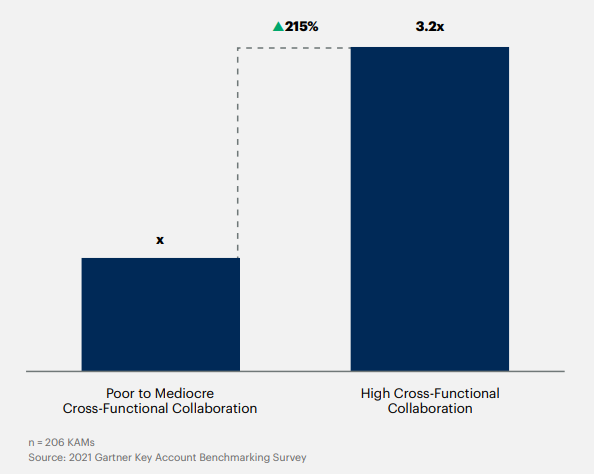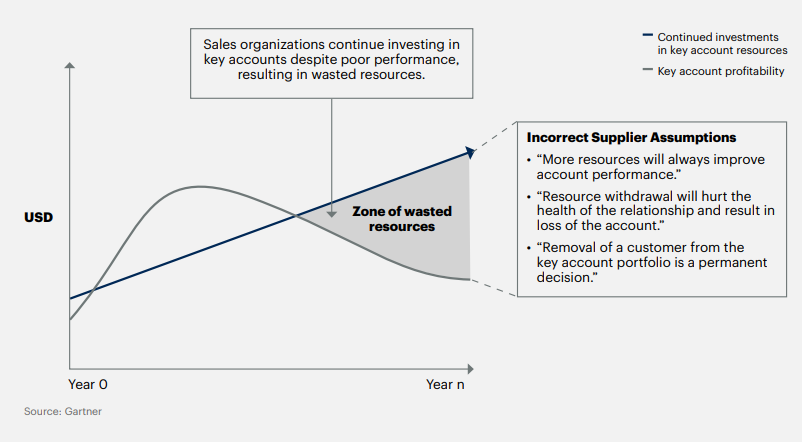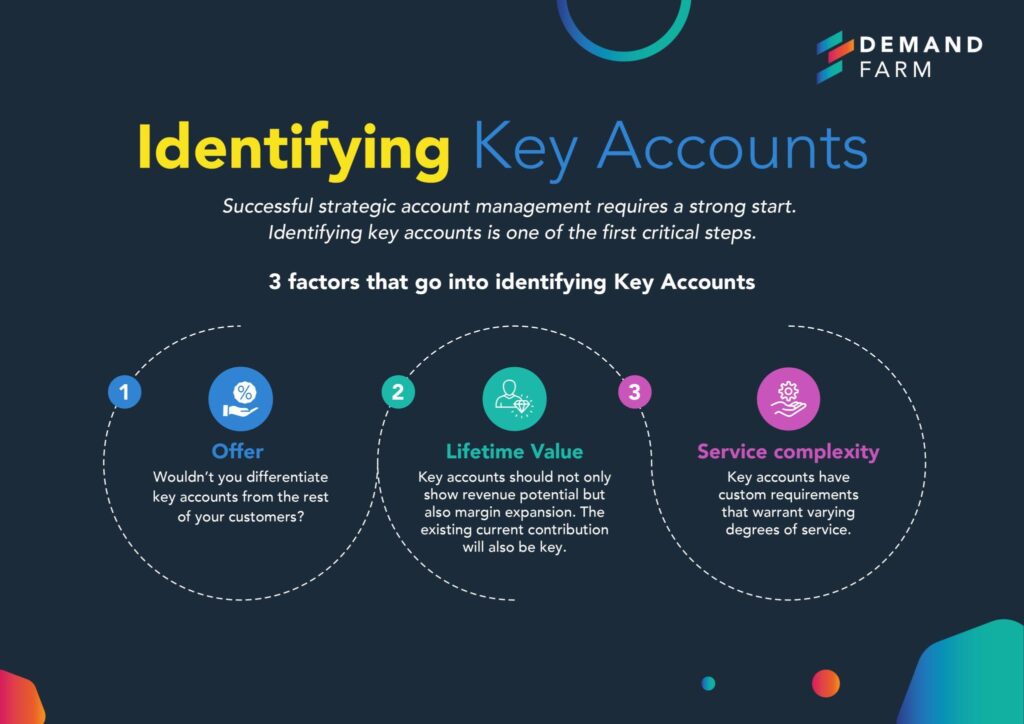The Key Account Planning Process
Nurturing existing customers is a time-tested way of improving business, and for good reason: people who are already in business with an organization are more likely to understand the strengths and advantages the partnership can present. The odds increase while selling to an existing customer, by four to five times – showing how vendor organizations can achieve exponential growth by prioritizing key relationships.
And like any relationship, digital tools can help enhance the experience. While B2C organizations have been trying to mass-personalize for years, B2B sales teams can achieve the effect with relatively lesser effort, because the target audience is limited to a number of stakeholders. Creating a key account plan for important accounts develops an effective strategy that fosters an environment of mutual growth.
The ‘What’ of Key Account Planning Process
Before understanding what key account planning is, The definition of what ‘key’ accounts are should be established. This is important because not all organizations have the same goals: for some, a key account might be the one with multiple sales opportunities, and for a smaller form – a customer with very high potential might be a key account (even if they’re contributing less). Key customers can also become vendor organization’s evangelists, refer new prospects to the group, and champion vendor’s products because of the difference it makes to their work. A key account plan shows the way to keep these clients’ needs fulfilled. It can be seen as a map that shows the current status of the partnership, what can be done in the future, and what steps can be taken.
As Key Account Management adapts to a fast-paced digital environment, how do you foresee its future?
● What has changed in KAM post-COVID?
● What are the top contributors to a successful KAM program?
● What are some of the key skills required for effective KAM in the future?
● How will digital KAM change the selling experience, going forward?
● What are the kinds of tools important for KAM today and tomorrow?
Watch the video below to understand the shifts in the Key Account Management journey.
The ‘How’ of Key Account Planning Process
Key accounts can be moderate to big projects, and takes a few hours to get started. Once the Account plan and details are in place, the duty of the sales team of the vendor organization is to keep it updated so that the information stays relevant. The process starts with Account overview, which defines the information that is relevant to the account plan. The information leads to setting up of Objectives, which provide insight into the client’s needs, paving way to develop a set of goals or objectives keeping the customer’s targets and vision. Setting objectives allows us to understand how the Solution should be presented. These solutions should be worded/framed or presented in such a way that they answer the questions posed by the customers’ objectives. The Action plan details out how to reach the destination, and earmarks clear responsibilities that provide a defined timeline for task completion. Sub-tasks are also captured in the action plan, if the project involves many stakeholders or teams that need to sign off, they need to be mentioned in the action plan too. Change management is about evaluating positive or negative outcomes of the action plan and assigning a value to it. This gives an understanding of what forces are acting against change, and devise ways to overcome them (or abandon the pursuit if the cost is high). Implementation plans are presented to the customer based on the information and insights gathered previously, So that an agreement can be reached in accordance with the action plan, ownership of tasks, important dates, and other factors. Review of the plan decides the frequency, and the element to be changed in the key account plan. The plan should be flexible enough to accommodate changes like attrition, budget variations, department changes, etc. Depending on the scale of the project, key account plans can be reviewed at any frequency – from weekly to quarterly.
The ‘Why’ of Key Account Planning Process
Key account planning affects the bottom line by building long-lasting relationships, creating trustworthy referrals, and improving bottom line – key accounts are spending 33% more than the market average. The results are because of improved customer experience – A Harvard Business Review article noted that customer satisfaction went up by 20% within a few years of the introducing key account management programs, resulting in a 15% profit increase. A Stanford university research shows that Key Account Management programs that have existed for longer than five years, report double the results. Key account management also frees up time of sales executives, so that they can pay the same attention to non-key clients too. Key account management software introduces automated processes and systems into the workflow, while improving efficiency and ensuring equal attention to all clients.

Choosing key accounts for key account planning
The challenge for many organizations aiming at key account management is defining what ‘key’ is. Selecting the right customers necessitates buy-ins across the organization on the metrics to be used. Some steps that can be taken to ensure the choices are alright, are:
Collaboration between different teams can align goals and responsibilities, and results in better solutions for client issues. The act of deciding what services to include should not ride with only the sales team – as the services provided for key customers like priority support, interactions with developers, and others won’t be fulfilled by sales team members. Having those team representatives on the panel while deciding on what services to offer key customers, can result in a perfect customized solution. The teams involved will also understand how they should contribute to the requests of the key clients, and can raise requests for any additional work hours or resources. A collaborative approach aligns the expectations of internal stakeholders, and helps in designing a winning key account program. The act of collaboration gains more prominence in B2B software sales, as B2B sales structures in buyer organizations move away from single account executive templates. With organizations demanding a digital process to facilitate the tool or solution buying, teams should interact with each other so that the best solution gets presented.

Source: Gartner
- Criteria for key accounts should consider the objective of the customer, as well as the product in question. Strategic alignment enhances the potential for long-term growth with key customers, and when customers value unique strengths of the vendor organization – the capabilities of the solution can be enhanced with mutual involvement in future iterations. With a mix of qualitative and quantitative metrics, criteria can be set to take internal and external factors into account and gauge the current impact of the relationship against the future potential. Customer’s revenue, bottom line, potential for acquisition, ease of business etc. can be the criteria used to shortlist key customers.
- Calculation of the viability core, based on the criteria. It must be ensured that the number of criteria used are not more than 8 or 10, as larger numbers present more data points that can lead to analysis paralysis. Having a scorecard allows sales team members to measure accounts in a consistent way that also scales as business needs change. Having different weights to criteria is a good idea, as not all of them influence the work in the same way. Having a potential unicorn as a client might be great, but if they score poorly on the ‘ease’ aspect, the vendor organization might burn out before seeing the fruits of their labour. An effective scorecard produces a clear score that highlights the importance of a customer.
- Cadence of the key account evaluation helps key account managers to keep their key account management database up to date, and have the most relevant information ready to help the client. Successful key account programs update information on a pre-set frequency, and reassess key accounts at least annually. Conducting internal key account review processes can bring the focus back on the needs of customers, and if they still align with the vision for the product or solution. Based on the result, the key account can be ramped up or maintained as is – and evolve them at their own pace.

Source: Gartner
Implementing Key Account Management Plan
Organizations can start the process of identifying and managing key accounts in multiple ways, and here are the steps and structure that usually form a part of the process.

Check out this Key Account Management scorecard template to identify key accounts.
- Analysis of accounts to understand how every account is contributing to the vendor organization’s revenue. Analysis can also highlight accounts that have growth potential.
- Segmenting accounts according to the results of analysis, and matching against the criteria previously selected, gives the list that can be arranged by the level of importance.
- Understanding decision making of the customer organization involves identifying the key decision-makers and influencers, evaluating the existing level of partnership with them, identifying their needs, areas of interests, and other relevant factors, and mapping working links among stakeholders.
- Diagnosis of the situation provides a useful SWOT analysis of the customer organization’s state and the market shape, keeping missteps at bay.
- Objective setting defines realistic goals for chosen key performance indicators measured in the analysis.
- Tactical planning utilizes all the information and progress achieved in the previous steps and builds an impactful account plan. Areas where additional resources can add more value can be identified in this stage.
- Monitoring makes sure that the key account management actions are implemented properly, and performance indicators to measure impact are set correctly.
Download Now: 9 Steps to Build a Rock-Solid Key Account Management Process
Tips to improve returns on the Key Account Management Plan
Returns on key performance management activities are usually calculated based on KPIs that are pre-defined to be in line with the vendor organization’s strategy. The process should always include inputs from the customer, which can be achieved using satisfaction questionnaires. Even with winning pitches, such analysis can throw up insights on improvement areas. The financial information should be given enough weightage and should be analyzed from customer satisfaction and ROI point of view. Maintaining a mutually beneficial relationship that delivers returns for both customer and the vendor, needs extra care in certain matters.
- Listening to the said and unsaid needs requires key account managers to prioritize relationship building. They can do that only when they have a clear sense of the big picture, and that puts the onus on vendor organization’s leaders to unambiguously define organizational/product goals. Knowing how different functions and business needs are related allows them to act on the needs of the client. The silent asks of customers are usually related to performance and responsiveness, and bringing support and development team on board the key account planning process can reveal other dependencies or opportunities.
- Understanding the customer’s culture gives key account managers a window into what makes them work, their dreams, and why they want to achieve it. Business understanding leads to an improved understanding of the industry as a whole, and with that comes the expertise to tailor the product or service to suit the exact customer needs.
- Coming up with proactive solutions shows customers that the vendor team is invested in solving their issue. Having regular check-ins with key accounts keeps the satisfaction levels high, and adds more opportunities to upsell or cross-sell newer offerings. Being transparent about timeline changes creates accurate expectations, which customers can rely on. Proactive goals that are rooted in reality can enhance the strength of the partnership.
- Planning features and updates in advance allow customers to lay out clear plans of action, so that their internal processes stay on track. With timely updates, key account managers can keep customers in loop on major changes and prepare them for the benefits that can be gained from new changes. Predicting the needs of the clients and being prepared to address them quickly, can make avenues for both clients and vendors to handle turbulent economic climates.
- Personalizing solution features to meet the needs of clients, requires key account managers to have a thorough understanding of the solution offered, and the issue it is meant to solve. While the solution may be generic, the way customers use it may differ, and appealing to them in a way they find more useful will result in a better success rate.
Key account planning processes require managers to be an active growth partner to the clients, and they can take a collaborative approach to the processes with their team members and customers. With Key Account Management software, they can convert the elementary knowledge that rests within the organization into a flexible, usable enterprise memory. A collaborative approach to the key accounts lead to development of strategies that are in line with both client and vendor teams. Frequent discussions between clients and vendors speed up the development process, where timely feedback provides precise directions.
 On-Demand Webinar: Unfiltered take on AI in Account Planning: Meet DemandFarm’s KAM AI
On-Demand Webinar: Unfiltered take on AI in Account Planning: Meet DemandFarm’s KAM AI 


